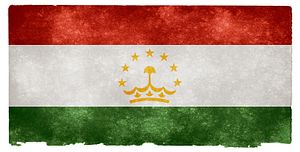Just ahead of the New Year holiday, Russia ratified an agreement on the organized recruitment of Tajik labor migrants who work seasonally in Russia. The agreement was signed in April 2019, but was not ratified by Russian until December.
According to Asia Plus, the agreement provides for the government organized recruitment of Tajik workers for jobs in Russia.The Tajik government takes on responsibility for marshalling workers for positions requested by Russian employers, selecting candidates with the necessary qualifications and providing training, including Russian language training, and facilitating return of workers to Tajikistan.
“Under this agreement, employers must actively participate in an organized recruitment of labor migrants, provide migrants with safe conditions of work and ensure regular payment of wages,” Asia Plus reported.
The agreement was signed on April 17, 2019 when Tajik President Emomali Rahmon made a two-day visit to Moscow. It was not ratified by the Russian State Duma until December 17, after which Russian President Vladimir Putin signed it. It’s not clear why the agreement took so long for Russia to ratify but labor migration is a critical issue between the two states.
Tajikistan is one of the world’s most remittance-dependent countries. According to the World Bank, in 2018 remittances were worth around $2.2 billion — equivalent to 29 percent of the country’s GDP.
Eurasianet’s Sam Bhutia wrote a good overview of the issue of remittances from Russia to Central Asia last year. In that piece, he noted, “Though remittances do not factor directly into GDP calculations, remittances are a key source of household income in Kyrgyzstan and Tajikistan, especially in rural areas. Remittances help reduce poverty and ease credit constraints for poor households and local businesses. However, remittances can also foster a culture of dependence and reduce labor supply by encouraging local workers to head abroad.”
Asia Plus commented in its reporting of the agreement’s ratification that “labor migrants are still a critical component in Tajikistan’s economy, keeping many families at home above the poverty line.”
The issue of labor migration can be touchy in Central Asia, at times. For example, Uzbekistan’s first President Islam Karimov in 2013 called Uzbek labor migrants “lazy.”
“I describe as lazy those who go to Moscow and sweep its streets and squares. One feels disgusted with Uzbeks going there for a slice of bread,” he said.
Rahmon, while not as dismissive of migrant workers as Karimov was, heralded lower numbers of Tajiks seeking work abroad recently. In 2008, remittances hit a high, equal to just under 50 percent of Tajikistan’s GDP. According to Rahmon, the volume of Tajiks seeking work abroad has decreased 60 percent since 2010. The Tajik government estimates the number to be somewhere above 400,000 while Russian authorities have much higher figures, over 1 million.
The newly ratified agreement attempts to impose order and government responsibility into the labor migration process. But much migrant labor already occurs irregularly and it’s unclear if the new agreement will be able to tackle existing inadequacies or merely give both governments further influence in the process of who gets to travel abroad to work. Tajik citizens do not need visas to travel to Russia, but they require permits and registration to engage in work.
Central Asian migrant workers are ubiquitous in Russia, but also periodically the target of nationalistic ire and state crackdown. In December, Human Rights Watch said that Russian police rounded up “scores of Central Asian migrant workers, beating many of them.” Those targeted in the raids were reportedly mostly Kyrgyz, but included Tajiks and Uzbeks as well. The police took them in for “identify checks.”

































